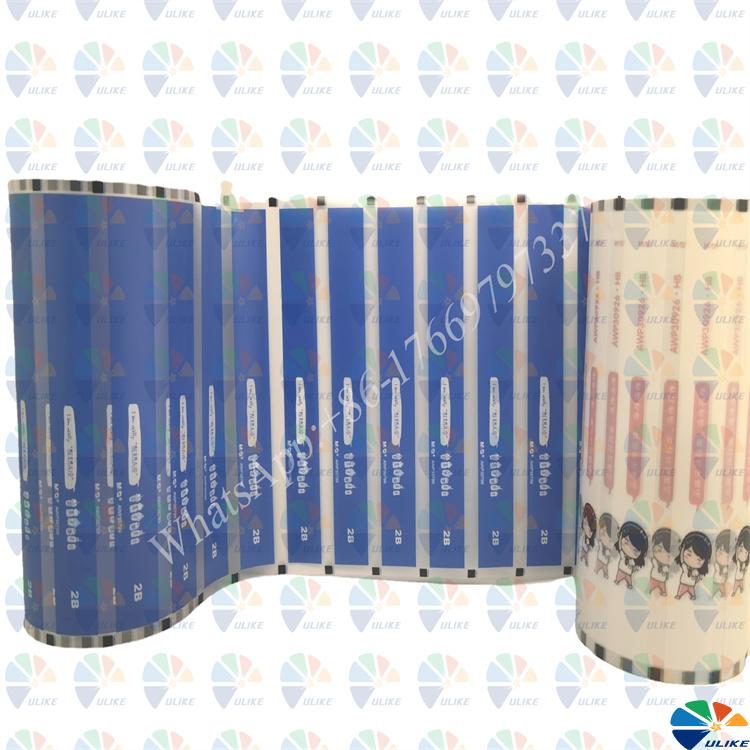Flat thermal transfer technology
Flat thermal transfer technology
1.
Flat thermal transfer technology
Printing has a long history, which can be traced back to the first year of the Eastern Han Dynasty (105 AD) before Cai Lun invented paper. Most of the inventions of printing technology started with flat printing, and the same is true for thermal transfer technology.
Below, let us understand the beginning of thermal transfer technology: flat thermal transfer technology, a seemingly simple but not simple printing technology.
2. The simplicity of flat thermal transfer technology
The simplicity of flat thermal transfer technology is reflected in two aspects:
1. Flat thermal transfer film production
According to the area of the workpiece plane shape, the thermal transfer pattern is accurately designed, and the flat thermal transfer film is printed on the plate.
2. Flat thermal transfer processing
First, tailor the mold for the product, and use the thermal transfer machine to transfer the pattern on the flat thermal transfer film to the surface of the product.
Simply put, flat thermal transfer technology is the process of transferring the thermal transfer film pattern to the surface of the substrate.
3. The complexity of flat thermal transfer technology
Products with regular cubes (sheets, cubes, cuboids, etc.) are suitable for flat thermal transfer technology as long as the size is within the range allowed by the thermal transfer process.
For substrates with a slight curvature on the surface (such as bowl covers and yo-yo shells), the use of thermal transfer machines and thermal transfer printing films can also be used for flat thermal transfer technology. The specific details can only be confirmed after trial hot stamping.
The complexity of flat thermal transfer technology also lies in:
1. Flat thermal transfer film artwork layout
When using editing and processing software for thermal transfer film layout, experienced layout technicians need to fully consider several issues:
1) Thermal transfer plate circumference, 380mm≤plate circumference≤1000mm; 430mm≤plate length≤1000mm.
2) For products with a slight curvature, the "shrinkage" of the substrate and the "stretchability" value of the thermal transfer base film.
3) The efficiency of the product thermal transfer process (continuity, simplicity, etc.).
2. Flat thermal transfer process
Whether the thermal transfer pattern of the substrate is beautiful or not, the thermal transfer process is the "finishing touch". The matters needing attention in the process can be summarized into two points:
1) According to the shape of the product, choose the appropriate flat thermal transfer machine model.
2) The degree of sophistication of the thermal transfer mold to ensure the thermal transfer effect.
The technological innovation of an industry is often extended from the initial technology.
Flat thermal transfer technology has also made due contributions to the development of thermal transfer technology.
![af]() Afrikaans
Afrikaans![sq]() Albanian
Albanian![am]() Amharic
Amharic![ar]() Arabic
Arabic![fr]() French
French![es]() Spanish
Spanish![ru]() Russian
Russian![de]() German
German![hy]() Armenian
Armenian![it]() Italian
Italian![ja]() Japanese
Japanese![ko]() Korean
Korean![pt]() Portuguese
Portuguese![hi]() Hindi
Hindi![az]() Azerbaijani
Azerbaijani![ro]() Romanian
Romanian![pl]() Polish
Polish![th]() Thai
Thai![el]() Greek
Greek![eu]() Basque
Basque![en]() English
English![zh-CN]() Chinese (Simplified)
Chinese (Simplified)![zh-TW]() Chinese (Traditional)
Chinese (Traditional)![be]() Belarusian
Belarusian![bn]() Bengali
Bengali![bs]() Bosnian
Bosnian![bg]() Bulgarian
Bulgarian![ca]() Catalan
Catalan![ceb]() Cebuano
Cebuano![ny]() Chichewa
Chichewa![co]() Corsican
Corsican![hr]() Croatian
Croatian![cs]() Czech
Czech![da]() Danish
Danish![nl]() Dutch
Dutch![eo]() Esperanto
Esperanto![et]() Estonian
Estonian![tl]() Filipino
Filipino![fi]() Finnish
Finnish![fy]() Frisian
Frisian![gl]() Galician
Galician![ka]() Georgian
Georgian![gu]() Gujarati
Gujarati![ht]() Haitian Creole
Haitian Creole![ha]() Hausa
Hausa![haw]() Hawaiian
Hawaiian![iw]() Hebrew
Hebrew![hmn]() Hmong
Hmong![hu]() Hungarian
Hungarian![is]() Icelandic
Icelandic![ig]() Igbo
Igbo![id]() Indonesian
Indonesian![ga]() Irish
Irish![jw]() Javanese
Javanese![kn]() Kannada
Kannada![kk]() Kazakh
Kazakh![km]() Khmer
Khmer![ku]() Kurdish (Kurmanji)
Kurdish (Kurmanji)![ky]() Kyrgyz
Kyrgyz![lo]() Lao
Lao![la]() Latin
Latin![lv]() Latvian
Latvian![lt]() Lithuanian
Lithuanian![lb]() Luxembourgish
Luxembourgish![mk]() Macedonian
Macedonian![mg]() Malagasy
Malagasy![ms]() Malay
Malay![ml]() Malayalam
Malayalam![mt]() Maltese
Maltese![mi]() Maori
Maori![mr]() Marathi
Marathi![mn]() Mongolian
Mongolian![my]() Myanmar (Burmese)
Myanmar (Burmese)![ne]() Nepali
Nepali![no]() Norwegian
Norwegian![ps]() Pashto
Pashto![fa]() Persian
Persian![pa]() Punjabi
Punjabi![sm]() Samoan
Samoan![gd]() Scottish Gaelic
Scottish Gaelic![sr]() Serbian
Serbian![st]() Sesotho
Sesotho![sn]() Shona
Shona![sd]() Sindhi
Sindhi![si]() Sinhala
Sinhala![sk]() Slovak
Slovak![sl]() Slovenian
Slovenian![so]() Somali
Somali![su]() Sudanese
Sudanese![sw]() Swahili
Swahili![sv]() Swedish
Swedish![tg]() Tajik
Tajik![ta]() Tamil
Tamil![te]() Telugu
Telugu![tr]() Turkish
Turkish![uk]() Ukrainian
Ukrainian![ur]() Urdu
Urdu![uz]() Uzbek
Uzbek![vi]() Vietnamese
Vietnamese![cy]() Welsh
Welsh![xh]() Xhosa
Xhosa![yi]() Yiddish
Yiddish![yo]() Yoruba
Yoruba![zu]() Zulu
Zulu


